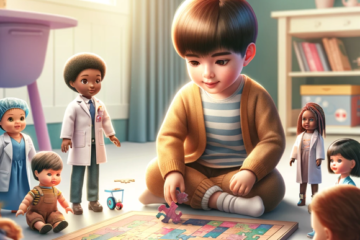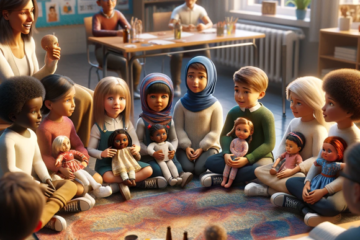In the enchanting world of childhood, dolls have always held a special place. From the iconic Barbie to diverse representations in recent years, these toys often serve as companions, mirrors, and even educators for young minds. Yet, beneath their innocent facade lies a complex influence on children’s perceptions of body image and beauty standards.
A Journey of Self-Discovery
For many children, playing with dolls is not merely about passing time; it’s a journey of self-discovery. As they dress, style, and project personalities onto their dolls, they are, in essence, exploring their own identities. However, this exploration is not without external influences. Dolls, with their predefined physical features, inadvertently become benchmarks against which children measure themselves.
The Barbie Effect
Barbie, with her impossibly long legs, tiny waist, and flawless features, has long been the poster child for unrealistic beauty standards. Critics argue that her portrayal perpetuates narrow ideals of femininity, leading children to aspire towards unattainable body types. Studies have shown that exposure to Barbie dolls can indeed impact young girls’ body image, contributing to feelings of inadequacy and dissatisfaction with their own appearance.
Shifting Narratives
Thankfully, the narrative surrounding dolls is evolving. Toy companies are increasingly diversifying their offerings, introducing dolls of various shapes, sizes, and ethnicities. These inclusive representations are crucial in broadening children’s perspectives on beauty and challenging conventional norms. By providing dolls that reflect the diversity of the real world, children are exposed to a more inclusive definition of beauty, fostering acceptance and self-love.
Empowering Choices
Moreover, the way caregivers engage with dolls can significantly influence children’s perceptions. Encouraging open dialogue about body diversity and emphasizing inner qualities over outward appearance can empower children to form healthy attitudes towards themselves and others. Additionally, providing a diverse array of toys allows children to make choices that resonate with their own identities, reinforcing the idea that beauty comes in many forms.
Conclusion: Redefining Beauty
In the grand tapestry of childhood, dolls play a pivotal role in shaping perceptions of beauty and body image. While historically rooted in narrow ideals, their influence is not fixed. Through thoughtful representation, inclusive design, and empowering dialogue, dolls can become catalysts for positive change, helping children embrace diversity and redefine beauty on their own terms. As we navigate the complexities of modernity, let us ensure that every child’s playtime is not just entertaining but also enriching, nurturing a generation of individuals who celebrate beauty in all its forms.



0 Comments